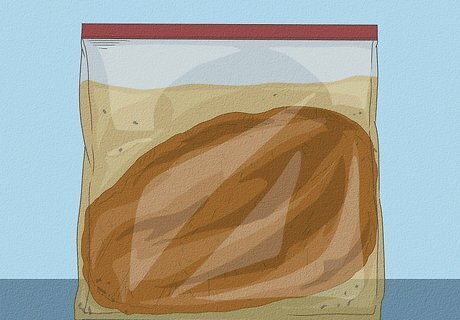
views
X
Trustworthy Source
PubMed Central
Journal archive from the U.S. National Institutes of Health
Go to source
Plus, adding a little into your diet each day can help your body detox, cleansing it of harmful bacteria.[2]
X
Trustworthy Source
Cleveland Clinic
Educational website from one of the world's leading hospitals
Go to source
Whether you want to drink it plain or use other yummy and nutritious ingredients to boost its flavor, this article will give you a step-by-step on how and why to drink ACV!
- Drink 1–2 tablespoons (15–30 ml) of apple cider vinegar 20 minutes before each meal 3 times daily to help regulate your appetite.
- Always dilute your apple cider vinegar in 1 c (240 ml) of water. Drinking undiluted apple cider vinegar can harm tooth enamel and your throat.
- Mix other spices like cinnamon, cayenne, and black pepper to help enhance apple cider vinegar's sharp, acidic flavor.
- Use unpasteurized apple cider vinegar (called "the mother") instead of filtered products. The mother contains helpful probiotics to aid digestion.
Drinking Apple Cider Vinegar Raw

Get fresh, unfiltered apple cider vinegar. Look in the vinegar section at your local supermarket for natural apple cider vinegar. Buy ACV with sediment settled on the bottom of the bottle. This is known as “the mother” and contains helpful enzymes and probiotics. Avoid getting pasteurized ACV since it won’t have the same properties as unfiltered vinegar and therefore won’t provide the same health benefits. You can also make your own apple cider vinegar at home by fermenting apples and sugar.

Dilute the apple cider vinegar in 1 c (240 ml) of water. By itself, apple cider vinegar is extremely acidic and could harm your teeth and throat if taken alone. To prevent these risks, shake your bottle of ACV before measuring out 1–2 tablespoons (15–30 ml), pouring it in a glass, and adding 1 c (240 ml) of water. You can use water of any temperature for your ACV. However, cold to room temp water will probably be the easiest to swallow.Tip: Drink your apple cider vinegar solution through a straw if you have sensitive teeth or weak enamel. In addition to hurting your throat, the acidity in ACV can easily erode tooth enamel over time.

Drink ACV 20 minutes before meals to regulate your glucose levels. Consume apple cider vinegar before your meal to help stimulate your digestive system and regulate your blood sugar levels as you eat. As you age, your body’s gastric juices deplete, making digestion more and more difficult. ACV contains probiotics. Probiotics can boost gut health and serve as a substitute for these lost juices if you drink it on an empty stomach. Consult with a doctor before starting an ACV regimen if you’re prescribed insulin or diuretic medications. Apple cider vinegar may weaken the medicine.

Continue taking apple cider vinegar 2-3 times daily. Drink 1–2 tablespoons (15–30 ml) of ACV a few times a day to maintain the health benefits it provides. Evenly spread your intake of ACV throughout the day, taking it before each meal and giving it proper time to digest. A common ACV schedule is drinking once when you wake up, once mid-morning, and once at night, but choose what works best for you. Some people use ACV exclusively as a detox regimen to help cleanse their gut of unhealthy bacteria. If you are using ACV for this purpose, drink 1–2 tablespoons (15–30 ml) 2-3 times a day for two to four weeks 3-4 times a year. Stop your ACV regimen if you experience repeated nausea or indigestion.
Enhancing Apple Cider Vinegar’s Flavor

Mix in 1–2 tablespoons (15–30 ml) of sweetener to hide ACV’s acidity. Measure out a pinch of your favorite sugar or sweetener and stir it into the apple cider vinegar to make your drink taste less sour. Mix the drink until the sugar is completely dissolved. Replace the sweetener with 1 tablespoon (15 ml) of honey for a natural sweetener.

Add cinnamon or cayenne pepper for added nutritional value. Sprinkle 1 teaspoon (4.9 ml) ground cinnamon or cayenne pepper into your ACV and stir until the drink is thoroughly mixed. Cinnamon and pepper will add a spicier flavor to your drink and assist in lowering your blood pressure. For a wider array of tastes, try making an apple cider vinegar tea with 2 tablespoons (30 ml) of ACV, 1 tablespoon (15 ml) of raw honey, 2 tablespoons (30 ml) of lemon juice, and 12 ounces (340 g) of hot water. Then, stick a cinnamon stick into this hot drink to steep the flavor.

Put in 2 tablespoons (30 ml) of lemon juice to make the ACV more tart. You can either squeeze the juice from raw lemons or use prepackaged lemon juice. Adjust the amount of lemon juice you put in your drink depending on how sour you want it to taste. A combination of apple cider vinegar and lemon juice also reduces harmful bacteria on various foods.

Incorporate apple cider vinegar into a salad dressing. Mix together 3 tablespoons (44 ml) of olive oil, ⁄4 cup (59 ml) of apple cider vinegar, 1 clove of minced garlic, and 0.5 teaspoons (2.5 ml) of salt in a bowl. Stir the dressing together until it’s well-combined. Dress the salad with about a third of your dressing and refrigerate the rest. Use apple cider vinegar on salads to kill some of the harmful microorganisms (such as salmonella) that can be found on salad greens. You can also mix 1 tablespoon (15 ml) of ACV into your favorite store-bought dressing.

Marinate meats and vegetables in apple cider vinegar. Create a mixture with a ratio of 2 parts cooking oil and 1 part apple cider vinegar in a resealable plastic bag. Stir in spices of your choosing like cayenne pepper, salt, and garlic powder. When the marinade is well-combined, put in your choice of meat or vegetables and let them soak in the bag for 3-4 hours before cooking. Experiment with different flavors. If you want a saltier marinade, add in 1 tablespoon (15 ml) each of Worcestershire and soy sauce. Just avoid adding whole grains like oats, stocky root vegetables like sweet potatoes, and other watery foods. While these items are great for treating acid reflux, they may lower the acidity and health benefits of ACV.

Put apple cider vinegar in your soups or stews. Soups and stews are filled with a variety of flavors that will mask the acidity of your apple cider vinegar. Put 1 tablespoon (15 ml) of ACV when you cook your next homemade bowl of soup and stir it thoroughly. When you’ve finished your soup, make sure to drink the broth to get all of your ACV’s nutrients. Apple cider vinegar can be added to store-bought or homemade soup.


















Comments
0 comment